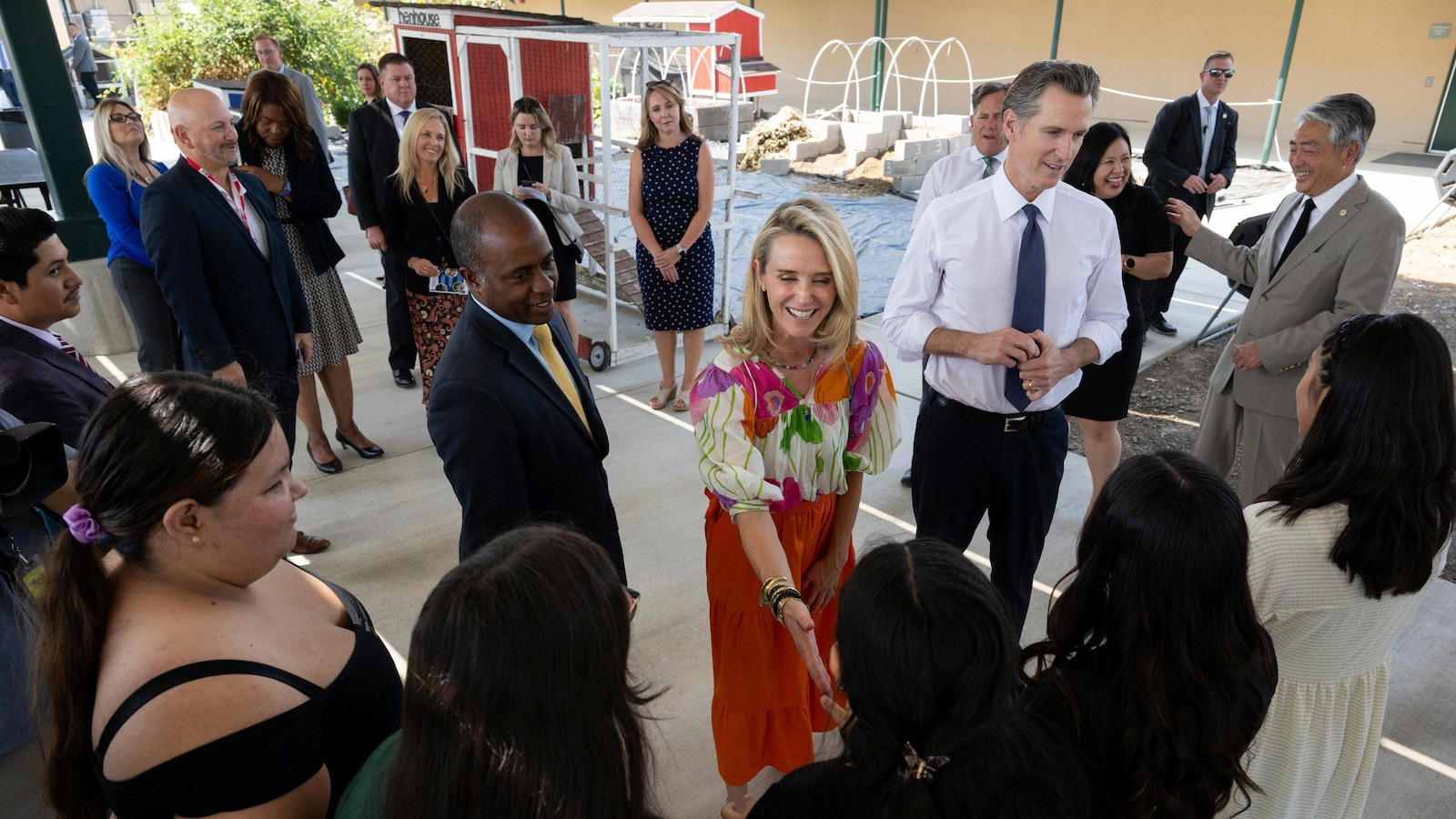
SACRAMENTO, Calif. — California and South Carolina could become the next states to limit cellphone use in schools, with state officials planning to take up the issue Tuesday.
California Gov. Gavin Newsom is sending letters to school districts, urging them to restrict students’ use of smartphones on campus. And the South Carolina State Board of Education is expected to approve guidelines Tuesday on limiting student phone access.
The efforts mark a broader push by officials in Utah, Florida, Louisiana and elsewhere to try to limit cellphone use in schools in order to reduce distractions in the classroom — and address the impacts of social media on the mental health of children and teens.
But progress can be challenging. Cellphone bans are already in place at many schools, but they aren’t always enforced.
Districts should “act now” to help students focus at school by restricting their smartphone use, Newsom said in the letter. He also cited risks to the well-being of young people, a subject which garnered renewed attention in June after U.S. Surgeon General Vivek Murthy called on Congress to require warning labels on social media platforms.
“Every classroom should be a place of focus, learning, and growth,” the Democrat said in his letter. “Working together, educators, administrators, and parents can create an environment where students are fully engaged in their education, free from the distractions on the phones and pressures of social media.”
Newsom said earlier this summer that he was planning to address student smartphone use, and his letter says he is working on it with the state Legislature. Tuesday’s announcement is not a mandate but nudges districts to act.
Newsom signed a law in 2019 granting districts the authority to regulate student smartphone access during school hours.
The debate over banning cellphones in schools to improve academic outcomes is not new. But officials often resort to bans as a solution rather than find ways to integrate digital devices as tools for learning, said Antero Garcia, a professor at Stanford University’s Graduate School of Education.
“What I’m struck by is society’s inability to kind of move forward and find other kinds of solutions other than perpetually going back to this ‘Should we ban devices?’ conversation as the primary solution to something that hasn’t worked,” Garcia said.
“Suggesting curtailing cellphone use in schools is a great thing to say,” he added. “What that means for the middle school teacher come next week when many schools start is a very different picture.”
Some schools and districts in California have already taken action. The Santa Barbara Unified and Los Angeles Unified school districts passed bans on student cellphone use in recent years.
But some school board advocates say the state should not go further by passing a blanket ban on cellphone use. That decision should be left up to districts, said Troy Flint, spokesperson for the California School Boards Association.
“Cellphone usage and social media usage on campus is certainly a serious issue and one that deserves a close examination,” Flint said. “But those decisions are very specific to certain schools and certain communities, and they need to be made at a local level.”
There is no cure-all for protecting students from the risks posed by smartphones, but the state is “opening up a conversation” on how districts could act, said David Goldberg, president of the California Teachers Association.
“It makes sense for us as adults to be looking and trying to take care of students and allow them to have safe spaces to learn,” he said. “How we do it is also very important — that we make sure that we bring students into these conversations and educators into these conversations.”
___
Austin is a corps member for The Associated Press/Report for America Statehouse News Initiative. Report for America is a nonprofit national service program that places journalists in local newsrooms to report on undercovered issues. Follow Austin on X: @sophieadanna
California Governor Gavin Newsom recently made headlines by encouraging school districts across the state to limit student cellphone usage during school hours. This initiative comes as part of a broader effort to improve student focus, reduce distractions, and promote healthy social interactions among young people.
Newsom’s recommendation is based on research that suggests excessive cellphone use can have negative effects on students’ academic performance and mental well-being. Studies have shown that constant access to smartphones can lead to decreased attention spans, disrupted sleep patterns, and increased feelings of anxiety and depression among teenagers.
By limiting cellphone usage in schools, Governor Newsom hopes to create a more conducive learning environment where students can fully engage with their studies and interact with their peers face-to-face. This move is also seen as a way to combat cyberbullying and prevent the spread of inappropriate content among students.
While some may argue that restricting cellphone use infringes on students’ rights and autonomy, Newsom believes that it is necessary to establish boundaries in order to promote a healthier school environment. He has emphasized the importance of finding a balance between technology use and personal interactions, and encourages schools to implement policies that support this goal.
Many school districts in California have already taken steps to limit cellphone usage in classrooms, with some implementing designated “phone-free zones” or requiring students to keep their devices turned off during certain times of the day. These measures have been met with positive feedback from teachers, parents, and students who have noticed improvements in student focus and behavior.
Overall, Governor Newsom’s initiative to limit student cellphone usage is a step in the right direction towards creating a more productive and positive learning environment for California’s youth. By prioritizing face-to-face interactions and reducing distractions, schools can help students develop important social skills, improve academic performance, and foster a healthier relationship with technology.


